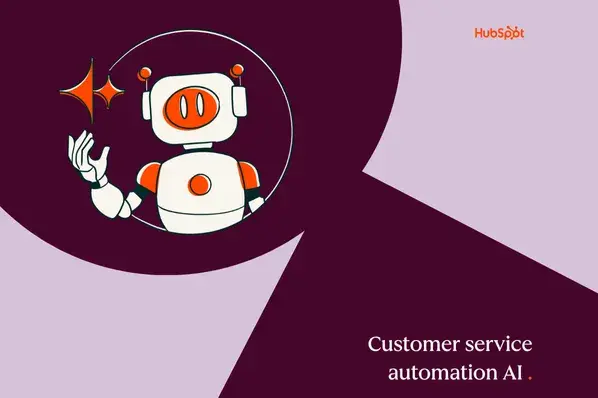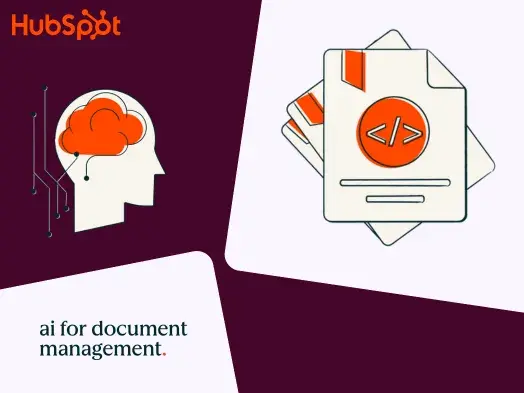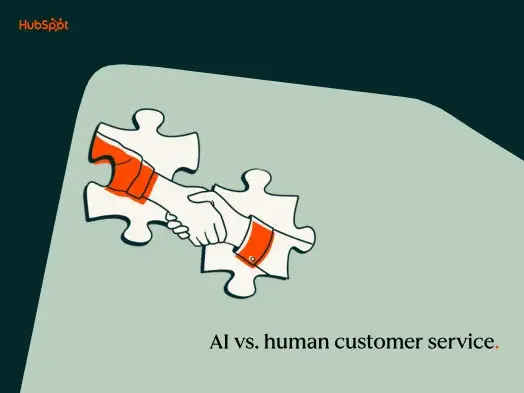What is Help Desk Management?
Help desk management is the process of overseeing and administering the activities and operations of a help desk or support center. It involves managing and coordinating the support provided to customers or internal users, addressing their inquiries, issues, or requests for assistance.

The primary goal of help desk management is to ensure timely and effective resolution of customer problems or inquiries while maintaining high levels of customer satisfaction. It involves various tasks such as ticket management, coordination of support agents, monitoring performance metrics, optimizing workflows, and improving the overall support experience.
One AI tool that I've used a lot is HubSpot’s free help desk & ticketing software which streamlines the most difficult parts of help desk management.
Why Use AI in Help-Desk Management?
So, why should you incorporate AI into this process? AI-powered chatbots and virtual assistants provide immediate, round-the-clock support, ensuring consistent and prompt responses to user queries.
They also enable intelligent automation and efficiency gains in help desk workflows. Machine learning algorithms can analyze historical data to identify patterns, predict ticket volumes, and prioritize and route incoming tickets for faster resolution.
For example, when my colleague, Clint Fontanella, worked in customer support at HubSpot, he used an AI-powered help desk to assign tickets to his queue.
Using AI in help desk management empowers businesses to streamline operations, enhance customer experiences, and improve agent productivity. It also enables faster response times, reduces costs, and allows support teams to focus on providing high-value support where human expertise is needed.
Now let’s take a look at how you can use AI to improve your help desk operations.
1. 24/7 Chatbot Support
AI-powered chatbots can handle common and repetitive customer queries, providing instant responses and freeing up support agents for more complex issues. But how exactly does it work?
AI chatbots utilize natural language processing and machine learning algorithms to understand and respond to user queries. They analyze text input, identify intent, extract relevant information, and generate appropriate responses.
The bot continually learns from interactions using training data, user feedback, and historical conversations to improve its understanding and refine its responses, enabling a more personalized and efficient user experience.
Customers can run into issues at any time of the day, so a 24/7 AI Chatbot can help solve frequently asked questions whenever your customers need it.
Trust me, when my 9-5 ends I don't want to be answering support questions, either. But, there's definitely been a time when I've needed help from a business outside of their normal support hours. AI-powered help desks remove this pain point and keep your support accessible at all times.
2. Automated Ticket Triaging
AI can analyze incoming support tickets and categorize them based on urgency, complexity, or other criteria, ensuring faster response times and efficient resource allocation. The AI collects historical ticket data, extracts relevant features, trains a machine learning model, and predicts the category and urgency of new tickets.
This helps assign tickets to the right teams or agents and ensures timely resolutions, improving efficiency and customer satisfaction. This is a great way to help your agents focus their efforts where needed and improve the efficiency of your help desk.
3. Self-Service Knowledge Bases
A knowledge base is a collection of resources that allows customers to answer their own questions about your product. AI can create self-service knowledge bases by automating the process of organizing and updating information. Natural language processing and machine learning algorithms are used to analyze and categorize content, making it searchable and easily accessible to users.
AI can also suggest relevant articles or solutions based on user queries, improving your customer experience and reducing the need for manual intervention.
Additionally, AI can assist in continuously updating and improving the knowledge base by analyzing user feedback and behavior, ensuring that the information remains accurate and up-to-date. This is a good way to make sure your customers have the most accurate information they need.
4. Sentiment Analysis
It can sometimes be difficult to decipher a customer’s tone through written feedback -- especially on live chat. Former live chat specialist, Clint Fontanella, said, "When you're on chat, all you have to work with is the text in front of you and the context of the conversation. AI can give you further insights into how the customer is feeling even if you can't hear their voice."
AI uses natural language processing and machine learning techniques to determine the sentiment or emotional tone conveyed through text. The process involves analyzing the text for sentiment indicators, such as words, phrases, or even emojis, and assigning positive, negative, or neutral labels based on these indicators. Machine learning models are trained on large datasets with labeled sentiments to learn patterns and make accurate predictions.
Sentiment analysis tools help your business better understand customer opinions, reactions, and brand perception, allowing you to gain valuable insights, make data-driven decisions, and enhance customer experiences.
5. Personalized Agent Routing
This feature’s usefulness depends on how many service tickets your business receives. For bigger businesses with smaller teams, managing hundreds of tickets just isn’t feasible.
AI can route support tickets to the most suitable support agent based on their expertise and workload, ensuring faster resolution and better customer experiences.
In this example, we can see how an AI help desk can process a customer inquiry and then redirect it to the team that's best suited to handle the issue.

6. Smart Suggestions and Recommendations
You don’t want your customer service agents fumbling around with handbooks and manuals when a customer is waiting online. AI can provide support agents with relevant suggestions, recommendations, and knowledge base articles during customer interactions, improving response accuracy and efficiency.
This will speed up the help desk process and leave your customers feeling satisfied with how quickly they’ve been assisted.
7. Language Translation
This is a seemingly obvious one. Language barriers between your agents and customers can often lead to frustration and a lack of help. AI-powered language translation can overcome language barriers in customer support by providing real-time translation for multilingual interactions.
For example, our customer support team at HubSpot handles tickets from users all over the world. AI allows our team to respond to customers in various locations by automatically translating text.
The power of being understood cannot be underestimated. This is a simple step that you can take to make your customers feel heard and satisfied.
8. Predictive Analytics
Machine learning models can identify common issues and their resolutions, enabling AI-powered bots to automatically suggest relevant solutions to users, reducing the need for manual intervention.
Predictive analytics also enables proactive problem-solving by detecting potential issues before they escalate, allowing support teams to allocate resources effectively and prioritize critical tickets.
9. Voice Recognition
AI-powered voice recognition technology is already a common tool used to improve help desk efficiency. When you call a big company, you’re often greeted by an interactive voice response (IVR) that asks you certain prompts to help you or direct you to an agent who can.
I can remember calling my cable provider (yes, I haven't cut the cord) and being greeted by an interactive voice system. The AI bot used my phone number to access my contact information and then used a voice-activated keyword to direct me to the right service department.
IVR can improve your help-desk efficiency by eliminating easily automatable tasks such as appointment scheduling, frequently asked questions, booking confirmations, and more. This is also another way AI can prioritize complex calls and assign them accordingly.
Using AI in Help-Desk Management
Now that you know the best ways AI can streamline your help-desk management process, it’s time to get started. Experiment with a few, or all of the tactics I've listed above to overhaul your help desk and create a better support experience for your customers.
Artificial Intelligence
.webp?width=112&height=112&name=Help-Desk-EN@3x%20(1).webp)
.png)








![How AI Can Unlock Customer Insights [+Expert Tips]](https://53.fs1.hubspotusercontent-na1.net/hubfs/53/customer-insights-ai-1-20241101-2082956.webp)


